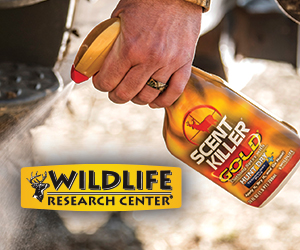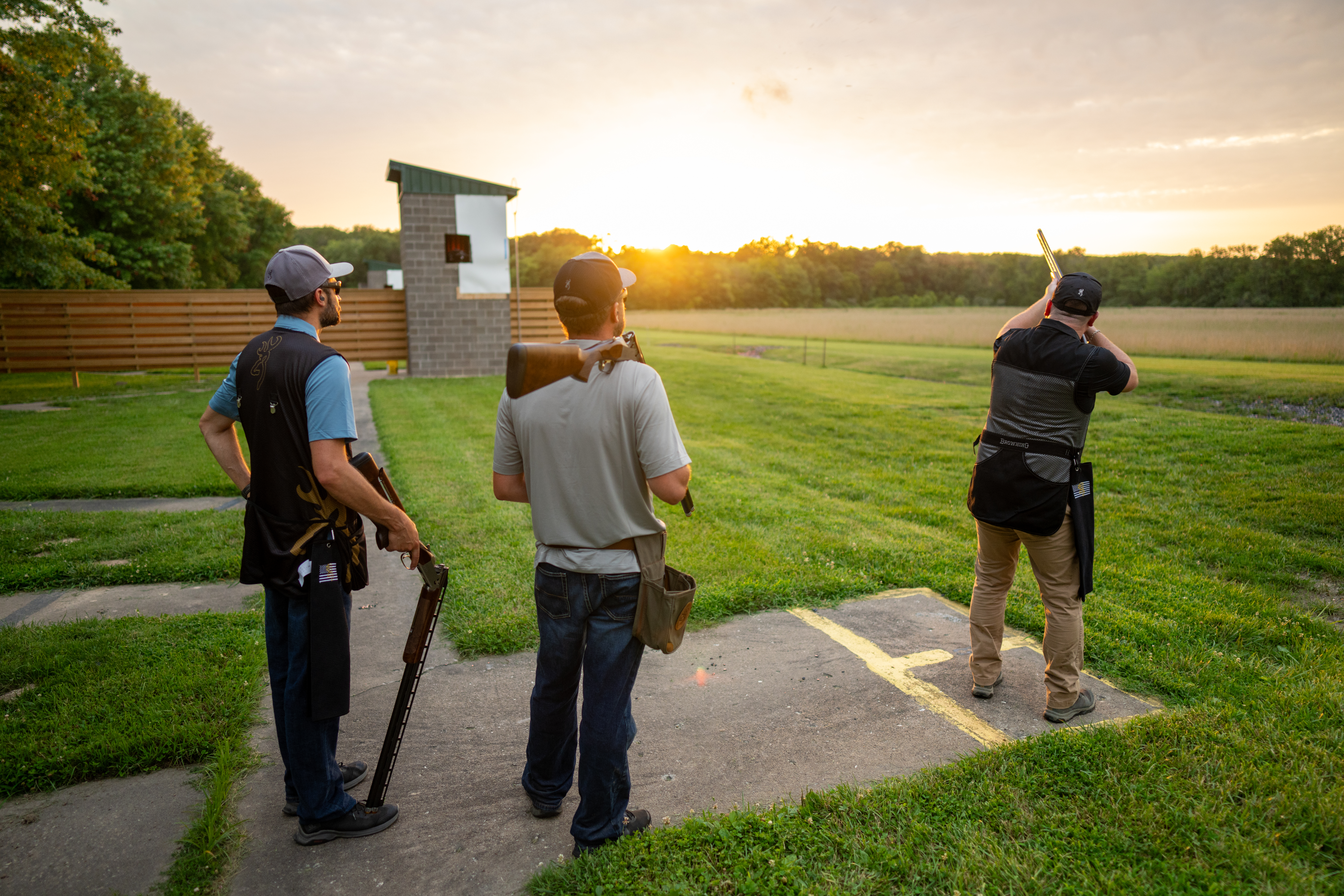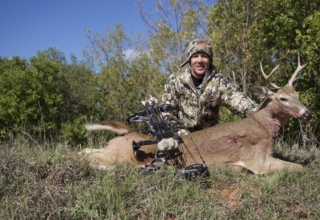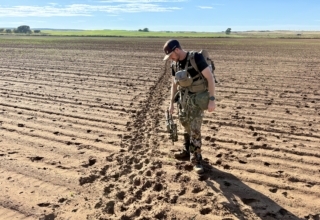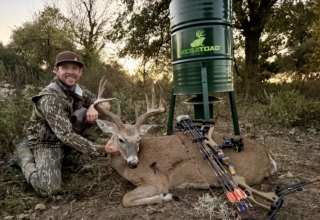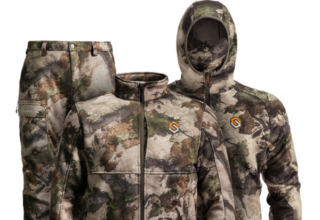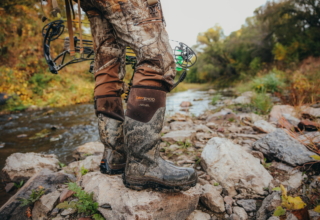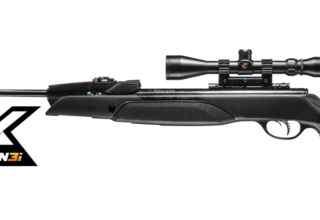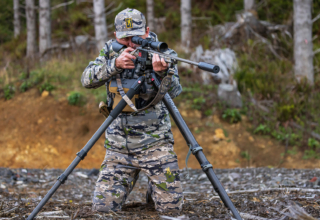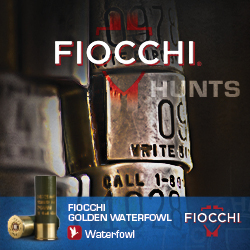Al Part II: What is trap shooting and what are some excellent trap shotguns? Let’s dive in.
by Jace Bauserman
In our previous article, we dove into the shotgun discipline of sporting clays and provided you with some excellent over/under models to choose from. Like sporting clays, trap is a popular shotgun discipline, is a lot of fun, lets the shotgunner go boom—a lot—and helps prepare you for the season ahead.
In trap shooting, clay targets are launched from a trap house that is in front of the shooter. There are five stations set along a quarter-circle of concrete. After calling for and shooting at a set number of targets (typically five) from each station, shooters rotate to the next station in a clockwise direction. Five stations with five targets from each station means 25 targets per round.
Unlike sporting clays, trap shots, though the angle of the shooter may be different based on the station, targets fly up and away from the shooter. Typically, shooters fire at one target at a time from the 16-yard line. As shooters increase in skill, they move back from the 16-yard line to 18 and 27 yards.
Trap shooting is difficult because targets fly fast and away from the shooter. Plus, the shooter only sees the back rim of the target. They can’t see the top orange dome or the belly. Shooters want to break targets close, hard, and fast. Breaking a target on the rise is the goal, and for this reason, trap shotguns are built a bit differently than sporting clay shotguns.
Once again, I chewed the shotgun fat with Browning’s Shotgun Product Manager, Mr. Tim Frampton.
Trap & Trap Shotguns
JB: I noticed the 825 Trap has the Inflex II Recoil Pad; why is that?
TF: Some of our trap guns have more rubberized Pachmayer recoil pads, which is fine. When shooting trap, the shooter pre-mounts the shotgun so they don’t have to worry about a more rubberized pad grabbing their clothing, causing mounting issues. In sporting clays, mounting issues can be a problem, but not in trap. Still, the Inflex Recoil II pad is just so good and does its job of soaking up recoil and utilizing the directional ribs to pull the comb down and away from your face. We love it, and so do those who put their trust in the Browning name. The only Browning Trap models that don’t feature the Inflex II are the Trap Max and Golden Clays.
JB: How do the stock dimensions of trap guns compare to sporting guns?
TF: Our trap shotguns have a slightly shorter length of pull than our sporting models. We have a lot of women and youth shooters that use our 825 Trap. Some are just getting started into shooting trap, while others are highly proficient shooters. It’s easier to shoot a shotgun that is too short than it is too long.
We also use a Monte Carlo stock on many of our trap guns. Monte Carlo stocks typically feature a raised comb and a lower heel to improve cheek weld and allow for the shooter to utilize a more upright stance. The Monte Carlo design is practical for trap. Trap shooters tend to have a more upright shooting stance. They know where the bird is coming from and where it’s going. Sporting clay shooters tend to have a more athletic stance as they don’t know if the bird will be going, coming, crossing, etc.
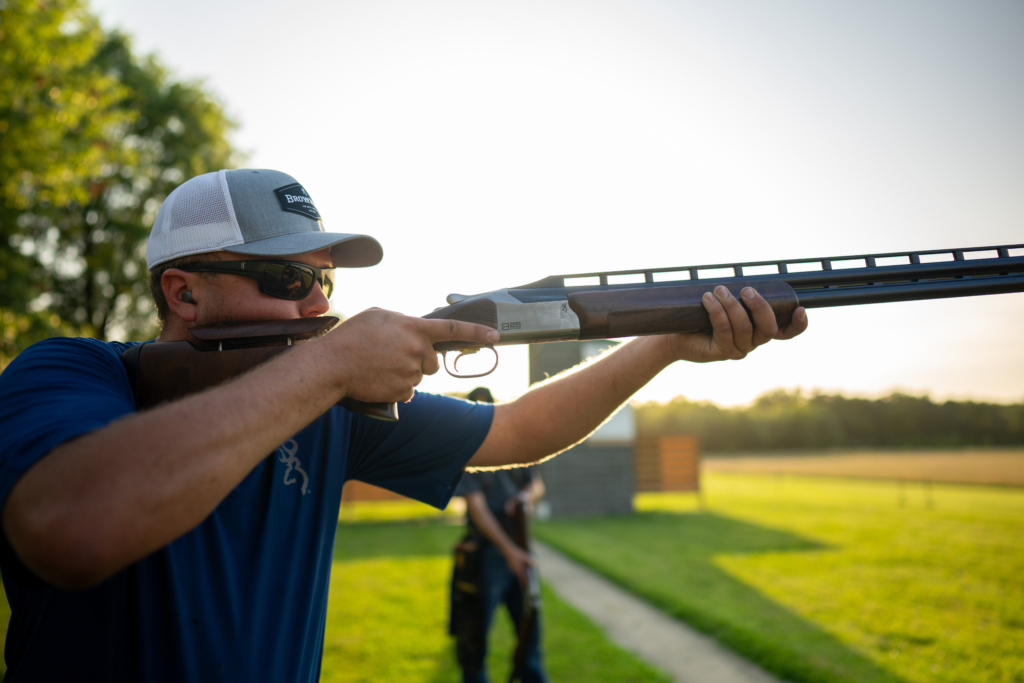
Our stocks have drops designed to get the shooter’s face into the proper position, and our drops are incredibly universal. It’s impossible to make a one-size-fits-all shotgun, but we try. We want people to be able to look down the raised rib and see the mid-bead and front-bead stacked. Naturally, achieving the perfect drop is easier with our more customizable trap models.
JB: What about palm swell?
TF: Our trap guns are designed for right-handed use and feature a right-hand palm swell. Still, there is not a lot of right-hand cast, so these trap guns are remarkably universal. I’m a left-hand shooter, and I can pick up all of our trap models and smash clays with them. The palm swell size is mid-range, providing a nice feel and grip.
JB: What about the trigger?
TF: As with our sporting models, we opted for the Triple Trigger System with three trigger shoes. We are so proud of this mechanical trigger design. Not only does it ensure immediate second-shot capability without relying on the recoil of the first shot to set up the next shot, but it also has a light, crisp break that you need to feel to appreciate. Plus, with the three shoes, you can swap triggers and go skinny, fat, or canted. It’s the perfect three-shoe trigger storm.
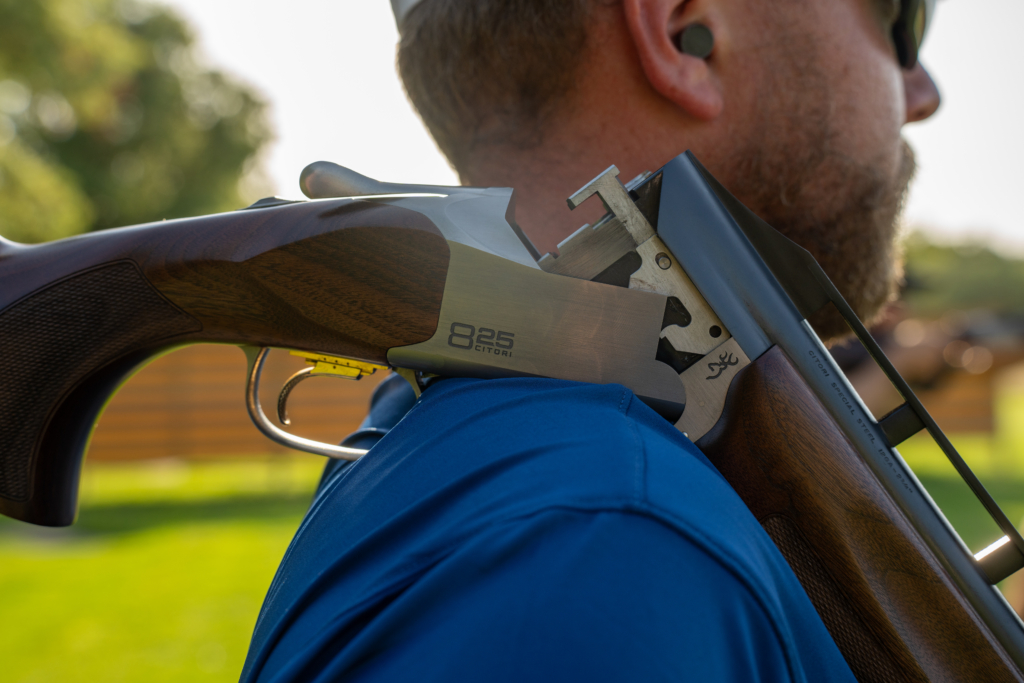
JB: What about the receiver?
TF: This is our best receiver design yet. I haven’t conducted any testing to confirm this, but the silver nitride finish appears to extend the life of the shotgun better than a standard blued receiver. It looks great and gives the gun an excellent finish. The receiver is trim, doesn’t scratch easily, and resists corrosion. It’s low-profile with sharp, modern contours. The traverse-mounted, full-width hinge pin consistently boosts strength and ensures a tight lock-up.
JB: Tell me about the forearm; it looks wider.
TF: It’s wider and fatter. Trap guns have a different shape in the forearm. We refer to it as a semi-beavertail forearm. It’s big, fat, and flat on the bottom. Trap shooters shoot from pre-mounted positions, and this forearm provides a great base for the palm. Shooters can position their hands on the forearm for superior balance, control, and comfort. Trap shooters have a particular style—they know what they want—and they want this type of forearm. We listen. If our shooters want something, we try to give it to them.
JB: We talked about the stock, but dang, is it stylish? Tell me more.
TF: These are Grade III/IV walnut stocks with an oil finish, and they add to the overall look of our trap shotguns. The cool thing is the wood is sourced in America and then sent to our facilities in Japan for shaping and fitting. Then it comes back.
We went with the oil finish over gloss, varnish, or satin. It gives the shotguns an excellent, high-end look. The finish is cleaner, and when combined with the dual matte barrels, it’s genuinely excellent.
JB: What about the barrels and sights?
TF: The mid-rib is vented to reduce weight and enable the barrels to cool more quickly. The top rib is a high-post floating, and the posts are solder just like our sporting clays, but the posts are higher and position the rib a half inch above the top of the barrel.
We discussed how trap shooters prefer a specific style, and the higher rib is one of those styles. Many shooters note that it enhances peripheral vision; others speak of how the rib blends with the stock’s position, allowing for an almost standing up shot, which improves balance and enables them to break more clays. Trap shooters like high ribs, and our 825 models have them.
Our trap guns are set up with a 70/30 POI. This means that 70 percent of the pattern is above the bird. If you can float your sight above the rising clay and stay balanced, you have an excellent chance of breaking that bird. We offer 30- and 32-inch barrel options. The size of the barrel should match your body size. The 32-inch barrels are extremely popular, but if you’re a small-framed shooter, I recommend a 30-inch barrel.
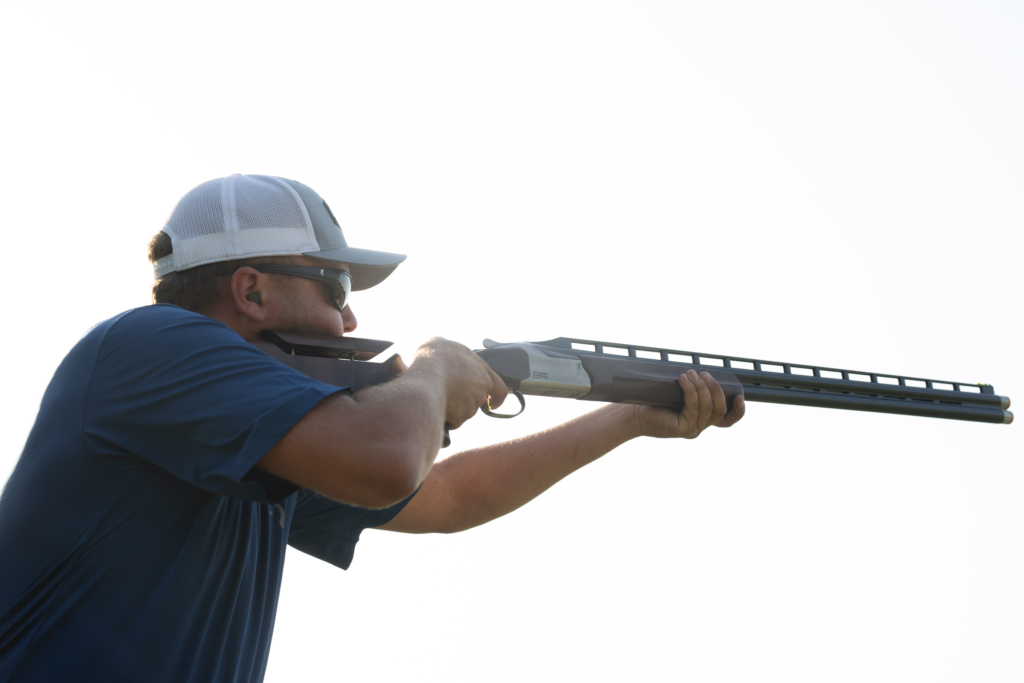
Some trap shooters want a higher point of impact. That’s where our models with customizable combs come in. We also offer choke tubes with comparatively tighter constrictions. In trap, shooters don’t see as much of the target as it’s going away. You’re looking at the backend of the target. We ship our trap guns with extended Invector-DS tubes in Full, Wide, Improved, Modified, and Modified. Again, we want to give you options.
JB: What about weight?
TF: Trap guns are heavier than field guns and sporting guns. Heavier means reduced recoil and increased balance. Our trap weights are perfect for standing on the line and busting hundreds of clays a day.
Winchester Repeating Arms Trap Models
Winchester Repeating Arms also makes some fine trap shotguns that allow the newbie trap shooter to test the waters before making such a heavy dollar investment. Currently, Winchester has three designated trap guns in its extensive lineup of reliable SXP pump-action shotguns.
Like Browning, Winchester has people in the right places, and Products Manager Ryan Swaner was who I needed to visit with about Winchester’s trap lineup.
JB: What makes the SXP such a popular shotgun?
RS: First, pump-action shotguns are great learning shotguns, but many shotgunners prefer a pump over a semi-automatic or over/under. Regarding the SXP, we have over 40 different models. We offer a range of SXP’s, including trap guns, turkey guns, waterfowl guns, field guns, deer guns, and defense guns. Plus, in most of those categories, we offer multiple models. There truly is an SXP for every shotgunner out there. We provide shorter LOP models for smaller-framed shooters, as well as full-size models. We offer a range of wood stocks and synthetics; we strive to deliver it all in the SXP line, and we’ve done a great job at that.
JB: Tell me about Winchester Repeating Arms’ SXP Trap Models.
RS: We have the SXP full-size SXP Trap and the SXP Trap Compact. Both have been in our SXP line for quite some time. Some of the specific features that make these shotguns ideal for trap shooting include the fiber-optic front sight with a mid-bead, which allows you to align the sights and break more clays. Both wear a Monte Carlo stock, which features a raised comb. The rib is wider, and a POI of 70/30 is achieved through the taller and wider rib.
Most trap shooters want a 70/30 POI, which means 70 percent of the shotgun’s pattern is above the clay, and 30 percent is below it. A 70/30 POI makes it much easier to hit rising targets, as 70 percent of the pattern impacts above the point of aim. Both trap guns are priced under $600, making them excellent entry-level options.
JB: Are 12- or 20-gauge trap shotguns more popular?
RS: Trap guys like to break targets hard and fast, which makes the 12-gauge popular, but we offer the SXP Trap Compact in 20-gauge in barrel options of 28 and 30 inches. This shotgun is an excellent entry-level shotgun for youth and small-framed shooters.
We offer the SXP Trap Compact in 12 gauge, too, available in the same barrel lengths. Traditionally, trap shooters prefer a longer barrel. Our standard SXP Trap, available in 12-gauge only, is offered with 30- and 32-inch barrels. Trap shooters prefer longer barrels because a longer-barrel shotgun provides a smooth and consistent swing, which is essential for breaking clay targets that rise and fly away.
JB: Why the wider rib?
RS: The wider rib helps you track and stay on target. When you’re shooting trap, it enables you to follow the target as it rises. That rib blended with the 70/30 POI will help you bust a lot more clays.
JB: Tell me about the SXP High Grade Trap
RS: That shotgun is new for us this year. We are excited about it. Our thinking behind the SXP High Grade Trap design was to add some eye appeal and still provide a ton of excellent features specific to the shooting discipline of trap. We did all of this and more while keeping the gun under $660.

The shotgun features a beautiful Turkish walnut stock with a high-profile trap comb forearm and traditional checkering. The forearm is wide and long, and we opted for a stylish aluminum alloy receiver with a gloss finish. It features a 5/16 Trap rib, Truglo fiber-optic front sights, and an ivory mid-bead. Our back-bored technology, combined with the Invector-Plus choke tube system, ensures consistent patterns that will easily shatter clays from the 27-yard line, the farthest back in the sport of trap.
The shotgun is built to last, and the hard chrome-plated chamber and bore ensure surfaces won’t wear down, even after thousands of shots. The SXP High Grade Trap is an excellent entry-level trap gun with more bells and whistles. Plus, it still hits a price point that, if a shooter doesn’t like it for the trap, they haven’t dropped thousands of dollars.
The SXP High Grade Trap is available in 12-gauge only and is available in 30- and 32-inch barrel options. The POI is 70/30, and an inertia-assisted system means less pumping force. This is critical when shooting trap. There will be days when shooters will break hundreds of clays, and a stiff pump-action shotgun won’t cut it.

